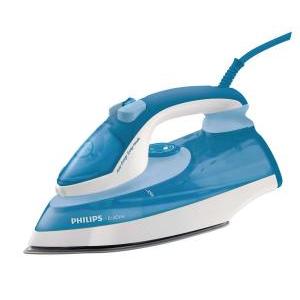Ceramic Soleplate vs Stainless Steel Soleplate: A Comparison
Ceramic soleplates are known for their smooth gliding and non-stick properties. They distribute heat evenly and are gentle on fabrics. They are also less prone to scratching and corrosion than stainless steel soleplates. However, they may require more maintenance and are more fragile than stainless steel. Stainless steel soleplates are durable and resistant to scratches and corrosion. They are also easy to clean and require less maintenance. However, they may not glide as smoothly as ceramic soleplates and may cause more friction on fabrics. Ultimately, the choice between ceramic and stainless steel soleplates depends on personal preference and needs.
Try our iron selector to choose right iron by answering simple questions without reading any buying guide.
Ceramic Soleplate vs Stainless Steel Soleplate: A Comparison
Ceramic soleplate and stainless steel soleplate are two popular types of soleplates used in irons. When it comes to choosing between the two, it can be tough to decide which one is better. In this article, we will compare ceramic soleplate and stainless steel soleplate to help you make an informed decision.
What is a Ceramic Soleplate?
A ceramic soleplate is made of a ceramic material that is coated on top of a metal plate. The ceramic material is known for its ability to distribute heat evenly, which means that the iron can glide smoothly over fabrics without leaving any hot spots. Ceramic soleplates are also non-stick, which means that they are less likely to snag or stick to fabrics. They are easy to clean and require minimal maintenance.
What is a Stainless Steel Soleplate?
A stainless steel soleplate is made of a stainless steel material that is polished to a smooth finish. Stainless steel is known for its durability and resistance to scratches and stains. It also heats up quickly and retains heat well, which means that it can iron fabrics quickly and efficiently. Stainless steel soleplates are easy to clean and require minimal maintenance.
Comparison between Ceramic Soleplate and Stainless Steel Soleplate
| Features | Ceramic Soleplate | Stainless Steel Soleplate |
|---|---|---|
| Heat Distribution | Ceramic soleplates distribute heat evenly, which means that the iron can glide smoothly over fabrics without leaving any hot spots. | Stainless steel soleplates heat up quickly and retain heat well, which means that they can iron fabrics quickly and efficiently. |
| Non-Stick | Ceramic soleplates are non-stick, which means that they are less likely to snag or stick to fabrics. | Stainless steel soleplates are not non-stick, which means that they may snag or stick to fabrics. |
| Durability | Ceramic soleplates are not as durable as stainless steel soleplates and may crack or chip over time. | Stainless steel soleplates are more durable than ceramic soleplates and are resistant to scratches and stains. |
| Cost | Ceramic soleplates are generally more expensive than stainless steel soleplates. | Stainless steel soleplates are generally less expensive than ceramic soleplates. |
By www.zelect.in
Conclusion
Both ceramic soleplates and stainless steel soleplates have their own set of advantages and disadvantages. Ceramic soleplates are known for their ability to distribute heat evenly and their non-stick properties, while stainless steel soleplates are known for their durability and quick heating. When choosing between the two, it is important to consider your personal preferences and needs. If you are looking for a soleplate that is easy to clean and requires minimal maintenance, a ceramic soleplate may be the best choice for you. If you are looking for a soleplate that is durable and heats up quickly, a stainless steel soleplate may be the better option. Ultimately, the choice between ceramic soleplate and stainless steel soleplate comes down to personal preference and budget.

Our smart selection tool guides you to the perfect and effortless purchase every time.
Facebook Twitter Email
Recommended articles for Iron
Iron types and buying guide
-
Iron buying guide 2024, India
-
Aluminum Soleplate: Lightweight and Efficient Ironing Experience
-
Heavy weight vs light weight iron box
-
Exploring the Advantages of American Heritage Non-Stick Soleplate
-
American Heritage Non-Stick Soleplate: A Breakthrough in Ironing Technology
-
Ceramic vs. Aluminum Soleplate: Which is Better?
-
Diamond-Coated Soleplate: Enhanced Durability and Smooth Ironing
-
Durilium Soleplate: Optimal Steam Distribution and Glide
-
Teflon-Coated Soleplate: Smooth Ironing and Resistance to Sticking
-
Steam Iron vs Dry Iron: Which One Should You Buy?
-
Titanium Soleplate: Durability and Performance in Ironing
-
Non-Stick Soleplate for Easy Gliding and Maintenance: Everything You Need to Know
-
Ceramic Soleplate vs Stainless Steel Soleplate: A Comparison
-
Steam Iron Soleplate vs Dry Iron Soleplate: Pros and Cons
-
Top-Rated Iron Boxes for Different Fabric Types
-
How many watts iron box is best
-
Which metal is used in iron box?
-
Understanding Iron Soleplate Types and Materials: A Comprehensive Guide

